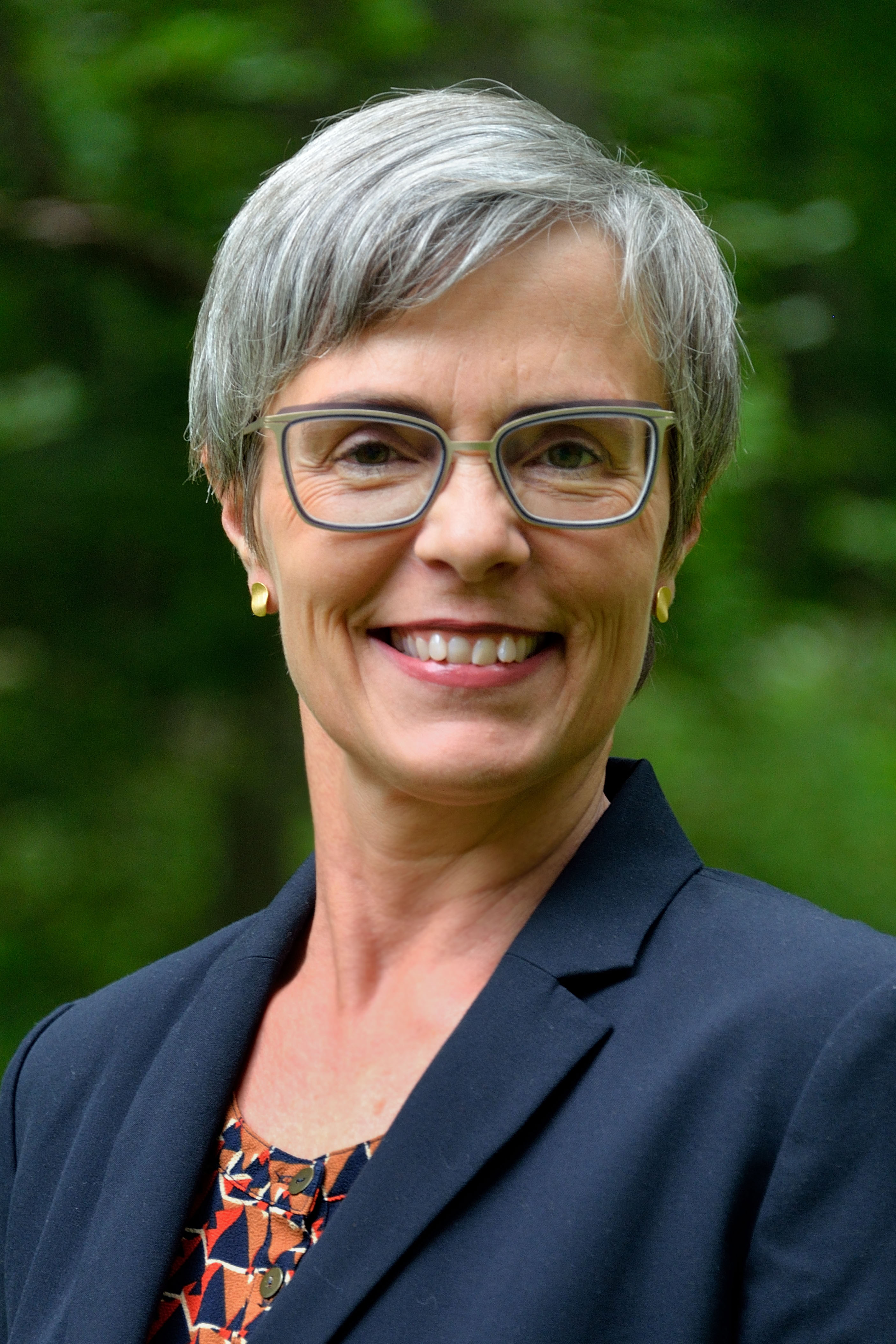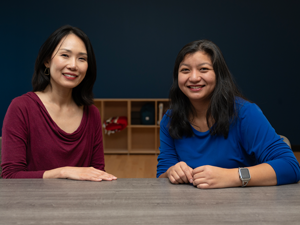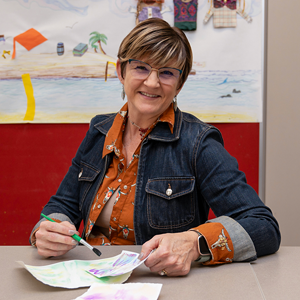Creative Arts Therapies at 11th Street
March 13, 2024

The Stephen and Sandra Sheller 11th Street Family Health Services of Drexel University (11th Street) focuses on fostering or promoting whole-person health. The center has been recognized as a national model of innovative care by the Robert Wood Johnson Foundation’s LEAP project (Learning from Effective Ambulatory Practices), the Agency for Healthcare Research and Quality and the American Academy of Nursing. 11th Street uses a transdisciplinary approach to deliver primary care, behavioral health, dental services, and health and wellness programs to more than 6,000 patients annually. Adults and children have a single point of access to care that addresses both the physiological and psycho-social aspects of the person and family.
The mission of the Stephen and Sandra Sheller 11th Street Family Health Services is to deliver high-quality, comprehensive health services to the clients it serves, with special attention to individuals facing socio-economic challenges vulnerable people and residents of public housing units in the 11th Street Corridor. In addition to its direct services mission, 11th Street provides an exemplary model of nurse-managed, community-based care for the education of health professions students and for faculty practice.
One of the innovative mental health services offered is creative arts therapies and counseling. In fact, there is a long history of creative arts therapies at 11th Street for client services, educating health professions students, research and for faculty practice.
We talked to Joke Bradt, PhD, professor and program director of the PhD in Creative Arts Therapies program, Clarissa Lacson, PhD, assistant clinical professor, Michele Rattigan, MA, ATR-BC, associate clinical professor, and Minjung Shim, PhD, assistant professor, from Drexel University’s College of Nursing and Health Professions who have been part of that history.
We asked them to share about their experiences at 11th Street.

Why did you choose to conduct some of your research or get involved at 11th Street?
JB: When I joined Drexel University in 2010, I was excited to continue my research related to music therapy for chronic pain management. I was particularly eager to explore opportunities for introducing music therapy for chronic pain at 11th Street. I initially started to work there as a clinician, offering group and music therapy sessions for chronic pain management one day per week. I then approached Patty Gerrity, director of 11th Street at that time, about conducting research to examine the treatment benefits of a group music therapy treatment program I had developed. After gaining approval from 11th Street’s Community Advisory Council and other health care providers, I pursued external research funding.
MS: I chose to conduct my research at 11th Street due to its strong commitment to the healing power of the arts and its ability to foster community cohesion. The community and staff here embody a culture that aligns with my own beliefs about the therapeutic potential of creative arts. I recognize that communities like those served by 11th Street often face barriers to accessing mental health services, including creative arts therapies. 11th Street bridges this gap, acting as a vital link between clinicians, researchers, and underserved populations. My experience has confirmed that dance/movement therapy (DMT) in both clinical and research settings, is not only accepted but also embraced by the community members here. Aware of the historical skepticism towards researchers in marginalized communities due to past unethical practices, I find 11th Street’s environment of mutual trust, care and respect particularly remarkable. I am grateful for the solid relationship Drexel, as an academic institution, has cultivated with the 11th Street community, a relationship I am proud to be a part of. The unwavering dedication and care demonstrated by the staff at 11th Street are both inspiring and humbling.
Given 11th Street's mission to serve underserved communities, a key goal of my future work is to enhance the awareness and accessibility of complementary and integrative interventions like DMT in these communities. I aim for my research to contribute to more inclusive and culturally sensitive health care practices, addressing the unique needs of these populations and enriching the overall landscape of health care services.
Tell us about the projects you have or are working on and how it’s been beneficial to the people who receive care there.
 JB: I have conducted two music therapy research studies at 11th Street. The first one was a small clinical trial funded by the National Institutes of Health (NIH). This study's purpose was to examine the feasibility and acceptability of a group music therapy treatment program for chronic pain management and to gather preliminary data about its treatment effects. In this study, we randomized 55 patients with chronic pain to an 8-week vocal music therapy treatment group or waitlist control group. We tracked feasibility data such as how many people enrolled in the study, how many dropped out, etc. We also measured the impact of music therapy on core chronic pain outcomes such as pain interference, pain-related self-efficacy, emotional functioning and pain intensity. Because we also wanted to hear patients describe in their own words how they had perceived the treatment and if they had any suggestions for program improvement, we conducted focus groups with all participants at the end of the study. The results were very encouraging (e.g. great improvements in pain-related self-efficacy and pain interference), and we received a clear message from participants: they greatly benefited from the program and wanted it to be longer. Therefore, in a subsequent study, funded by the National Endowment for the Arts (NEA), we decided to test if a 12-week program would lead to even better results. We found that both the 8- and 12-week programs were equally effective. However, we had a much harder time recruiting people to the 12-week program compared to the 8-week one. So, we learned that it may be harder for people to commit to a 12-week program before they have experienced what the treatment is about and how it may benefit them.
JB: I have conducted two music therapy research studies at 11th Street. The first one was a small clinical trial funded by the National Institutes of Health (NIH). This study's purpose was to examine the feasibility and acceptability of a group music therapy treatment program for chronic pain management and to gather preliminary data about its treatment effects. In this study, we randomized 55 patients with chronic pain to an 8-week vocal music therapy treatment group or waitlist control group. We tracked feasibility data such as how many people enrolled in the study, how many dropped out, etc. We also measured the impact of music therapy on core chronic pain outcomes such as pain interference, pain-related self-efficacy, emotional functioning and pain intensity. Because we also wanted to hear patients describe in their own words how they had perceived the treatment and if they had any suggestions for program improvement, we conducted focus groups with all participants at the end of the study. The results were very encouraging (e.g. great improvements in pain-related self-efficacy and pain interference), and we received a clear message from participants: they greatly benefited from the program and wanted it to be longer. Therefore, in a subsequent study, funded by the National Endowment for the Arts (NEA), we decided to test if a 12-week program would lead to even better results. We found that both the 8- and 12-week programs were equally effective. However, we had a much harder time recruiting people to the 12-week program compared to the 8-week one. So, we learned that it may be harder for people to commit to a 12-week program before they have experienced what the treatment is about and how it may benefit them.
A positive outcome of conducting this research at 11th Street is that soon after the initial study was completed, they decided to hire a music therapist.
What is the outcome you hope to see because of your research?
JB: I would like to see music therapy become integrated with chronic pain management programs across health care settings. There is a good amount of research evidence that demonstrates that music-based interventions, including music therapy, can help with pain management. However, we don’t quite understand yet exactly how music helps with pain. A recent initiative funded by NIH aims to answer that question. By better understanding how music-based interventions help people manage pain, interventions can be optimized so that people can get the most treatment benefits.
Tell us about your experience at 11th Street as both a student and now a faculty member.
CL: I first started working at 11th Street in 2017. I went a few days a week as a study coordinator for Dr. Bradt’s project, Creative Music Engagement to Improve Core Outcomes in Chronic Pain (funded by the NEA). We felt it was important to build relationships with the community members and the staff there as we began this project, so I introduced myself to all the providers and attended the staff’s morning meetings to understand their practices. I also made myself available to talk to community members as they sat in the waiting room, to get a sense of the community and what was important to them; and we presented the study at a few of the meetings of the community advisory board.
What drew you to 11th Street and what have you gained from your experience?
 MS: I, indeed, have an extensive relationship with 11th Street in different capacities. Starting in 2010, as a PhD student and Dr. Bradt's research assistant, I engaged with the 11th Street community through various roles such as recruitment, consenting, data collection, analysis and dissemination of research findings. The study I assisted with focused on the impact of music therapy on chronic pain management.
MS: I, indeed, have an extensive relationship with 11th Street in different capacities. Starting in 2010, as a PhD student and Dr. Bradt's research assistant, I engaged with the 11th Street community through various roles such as recruitment, consenting, data collection, analysis and dissemination of research findings. The study I assisted with focused on the impact of music therapy on chronic pain management.
Furthermore, my doctoral dissertation study, which explored the impact of DMT on people with chronic pain, also took place at 11th Street. This study involved both patients and staff and received enthusiastic feedback, demonstrating the positive influence of my work. The participants in the study strongly endorsed that DMT provided them with practical tools for managing their pain and related symptoms. This highlights the tangible benefits of DMT in equipping individuals with effective strategies to cope with chronic pain, a key factor in improving their daily functioning and quality of life. Additionally, we learned that DMT not only addressed the physical dimensions of pain but also had a profound impact on their mental health and emotional well-being. By instilling an embodied sense of hope and resilience, DMT helped participants manage their condition and cultivate a more positive outlook on life despite the challenges posed by chronic pain. Participants also endorsed DMT's role in enhancing social skills and providing a supportive community for individuals. Overall, participants reported changes indicating that the study had a comprehensive impact on them, addressing not only physical symptoms but also psychological and social aspects. The success of this DMT program led to an invitation from Lindsay Edwards, the then-director of CAT at 11th Street, to provide DMT services to clients. This opportunity allowed me to work as a clinician at 11th Street for nearly a year, further deepening my connection and contributions to the community.
My involvement with 11th Street continued in a research capacity when I joined CNHP as a faculty member in 2019. For my NIH-funded study, which focused on mindfulness-based DMT for chronic low back pain, I conducted DMT groups at 11th Street. I was warmly welcomed back by the community, and the study was well-attended by patients from 11th Street. The findings from this study also echoed the positive perspectives shared in my dissertation study, underscoring the holistic benefits of DMT and demonstrating its effectiveness in providing comprehensive care that encompasses physical, emotional and psychological aspects of health.
CL: During that time, I learned so much from working with the community members – how they value relationships and time spent listening to one another, their daily concerns and their endurance in the face of obstacles. The providers at 11th Street are inspirational in how they honor what the community values and how they organize their services to be provided in a holistic manner, caring for the whole person and their family system when possible.
As a new faculty member (I started in December 2022), I haven’t yet had an opportunity to revisit 11th Street myself, as my role focuses on the coordination of the counseling curriculum. But I know there continues to be great work and initiatives undertaken by my colleagues there.
 MR: I have been working in mental health for almost 30 years and being at 11th Street is unlike any other experience I have had. Working in the anti-racist, trauma-informed model is not a framework or approach. It’s a way of being. The people I have worked with and alongside embody that. It is not how we show up for others, but how we are with each other. That’s what makes 11th Street different. I think the students feel that and sense that. They are curious about it. What I do get concerned about is that when they leave and attend other places, they may quickly learn that not every place is 11th Street. Sadly, many places of care carry hurts and harms and oppressive practices: conscious and unconscious. This is not to say that 11th Street is perfect— no place is — but I have learned that when a rupture occurs, there is a desire and willingness for repair and learning to do better.
MR: I have been working in mental health for almost 30 years and being at 11th Street is unlike any other experience I have had. Working in the anti-racist, trauma-informed model is not a framework or approach. It’s a way of being. The people I have worked with and alongside embody that. It is not how we show up for others, but how we are with each other. That’s what makes 11th Street different. I think the students feel that and sense that. They are curious about it. What I do get concerned about is that when they leave and attend other places, they may quickly learn that not every place is 11th Street. Sadly, many places of care carry hurts and harms and oppressive practices: conscious and unconscious. This is not to say that 11th Street is perfect— no place is — but I have learned that when a rupture occurs, there is a desire and willingness for repair and learning to do better.
How do creative arts therapies benefit the community members who avail themselves of services from 11th Street?
CL: I think this is a question better directed to the community members themselves. But from talking with participants in the chronic pain study, it seemed as though they really benefited from psychoeducation about how to use their own music as a resource to help in coping with chronic pain, whether through motivation for movement, relaxing in preparation for sleep, emotional release or spiritual connection.
MR: A recent art therapy participant said it best to describe a takeaway of their experience, “With trauma, art is the way out.” I believe the presence of creative arts therapies practicum and internship students and their faculty supervisors on-site is an essential part of the post-COVID reawakening that is still unfolding in our communities. The word is still getting out that “we are back,” and each week we see fresh faces attending the groups and inquiring about individual sessions.